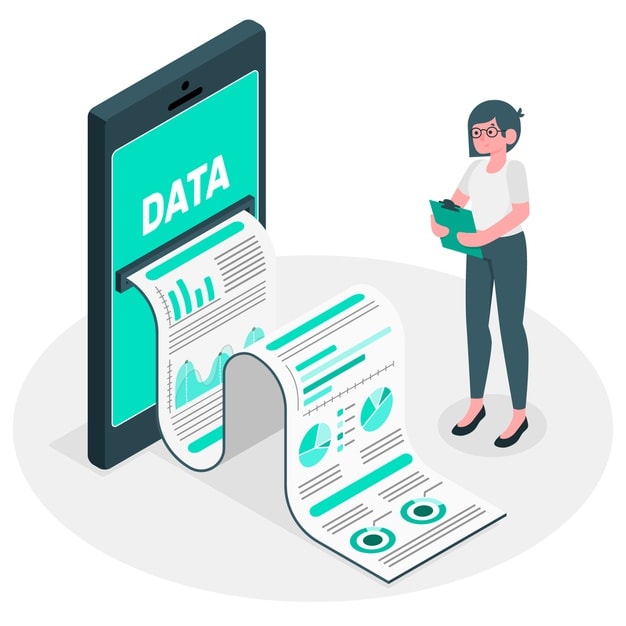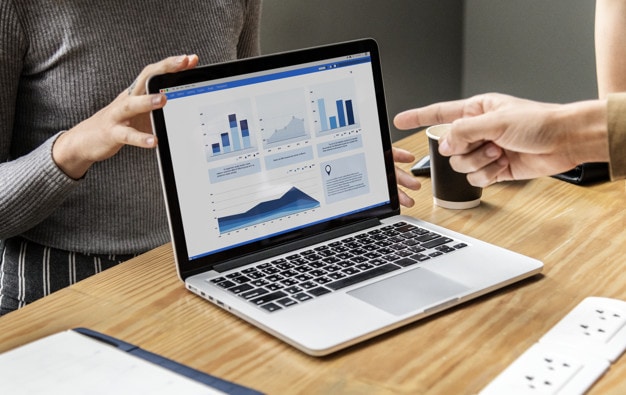
What Are the Different Types of Data Analysis Techniques and Steps to Implement Them?

Data analysis is the process of examining information to uncover insights and patterns It involves collecting, cleaning, modeling, and transforming data using statistical or analytical tools This helps in making informed decisions and predictions Different techniques and types of data analysis are used, and there are a variety of tools available to aid in the process
Data analysis involves analyzing, evaluating, cleansing, modeling, and transforming data using various statistical or analytical tools to uncover valuable insights that can inform decision-making processes. Its main objective is to extract essential information that can help solve problems and draw accurate conclusions.
Introduction
Delve into the realm of data analysis and gain insights on utilizing data to make informed decisions that maximize the likelihood of achieving desirable results. Let's begin without further delay.
Data is a critical form of information that is essential to numerous technologies and companies. These businesses rely heavily on data to operate effectively.
Raw data serves as the foundation for various processes. Through diverse technologies and methods, it is refined and transformed into a final output that can be utilized in other procedures or provided to the client as a finished product. Data analysis is a common application of this processed data.
Analyzing data is the process of examining the information that is received by a person or system. In data-driven industries, the accuracy of this analysis is crucial to the success of the business. Therefore, it holds significant importance.
The collected data is subjected to analysis through a range of tools and resources, as part of a qualitative research approach.
Data analysis involves the methodical use of logical and statistical techniques to compress, present, depict, assess, and summarize data. This discipline is indispensable and plays a vital role in numerous operations.
Means of Data Collection used in Data Analysis
Data can be collected in various ways and means. The most crucial part of data gathering is the authenticity and the correctness required.
Data can sometimes get ambiguous or misleading. Such data should be eliminated, and those sources should be avoided. Here is a list of some of the data sources.
1. Observations
Observing people can yield a wealth of information and data. The most common methods of observation include watching individuals, listening to their conversations, and interpreting their behaviors and responses. However, it is crucial to ensure that these practices are conducted ethically, without infringing upon people's privacy or security.
2. Surveys
Surveys include sets of questions that are used to understand the data. These questions need to be answered by the concerned people or the system under consideration.
The answers obtained work as a dataset. It is the dataset that can be further used for detailed analysis.
3. Interviews
Gathering data from living sources, such as individuals or groups, is a common method used to extract information. The interviewer asks specific questions to gather the necessary data, which can then be used for further analysis. In order to effectively analyze this data, there are several steps that should be followed.
Steps of Data Analysis
Data analysis can be achieved using the steps defined and described in several studies and research.
1. Define your objectives
The motive behind the data analysis should be clearly defined. To get the best results out of some data analysis, the objectives should be crystal clear.
To make the intentions very clear, you can ask various questions. The answers to these questions will help define the goals better.
2. Define questions
Once you have your objectives defined clearly, you need to ask the questions to your dataset.
The answers that you seek should be achieved through the data analysis you want to carry out.
The dataset needs to answer all of these questions, and only those explained can be solved by further data analysis.
3. Data collection
Gathering all necessary information for data analysis is a vital component in the process. The data collected should be comprehensive enough to address all relevant questions. When the collected data is capable of responding to these inquiries, it can then be utilized for more in-depth analysis.
4. Data scrubbing
The data which is collected in the steps given above is mostly in the raw form. Some details are not required while there is some unnecessary data.
and identify any unnecessary parts that can be eliminated through data scrubbing. This process involves converting the data into a compatible format for data analysis tools to work effectively.
In this step, the available data is analyzed. Various tools are used for analyzing this data.
Some devices are oriented with the latest technologies, while some methods are elementary to execute.
The result of this step is a block of well-analyzed data which can be used for prediction and conclusion purposes.
6. Result interpretation
Thorough examination of the data analysis results is crucial as it allows for easy interpretation of the findings. These results can be utilized to draw conclusions and make predictions, which are pivotal in utilizing the current dataset for future projections.
It helps you stay ready for the developments and new changes in the future.
Let us now have a look upon 10 of the most effective techniques of data analysis-
Key Techniques involved in Data Analysis
Data analysis can be done using various techniques. Most of them are very useful and straightforward to implement.
1. Establish your questions and clear your objectives:
Once you have a clear understanding of your objectives, it is important to establish the Key Performance Indicators (KPIs) that will help you measure progress towards those objectives. By setting KPIs, you can track and analyze your data in a more meaningful way, allowing you to make data-driven decisions and adjustments to your strategy as needed.
with the KPIs to ensure that you are focusing on the right areas and achieving your goals. By aligning your needs with the KPIs, you can ensure that you are making the most of your resources and efforts. This collaboration will enable you to identify any gaps in your strategy and take corrective measures to achieve your desired outcomes.
and focus on the relevant information to avoid cluttering your analysis. By doing this, you can streamline the process and ensure that you are only analyzing data that is truly relevant to your business objectives. This will save you time and resources, and ultimately lead to more accurate and meaningful insights.
To effectively manage data, it is important to design a roadmap that outlines how data will be collected, organized, analyzed, and used. This roadmap should also include measures for ensuring data security and compliance with regulations. By following a clear plan for data management, organizations can streamline their processes and make more informed decisions based on accurate and relevant data.
and processes is a crucial step in developing a successful data governance roadmap. This involves identifying the appropriate tools and systems to support data management activities and implementing them in a way that aligns with the overall governance strategy. By leveraging technology and best practices, organizations can streamline their data management processes and ensure that data is accurate, secure, and accessible. This not only improves operational efficiency but also enables data-driven decision making across the organization.
is also an important aspect of data analysis. It enables people to understand complex data sets through graphs, charts, and other visual representations. There are various tools available for data visualization, including Tableau, Power BI, and QlikView. By using these tools, businesses can easily identify trends, patterns, and outliers in their data, which can help them make informed decisions.
By presenting data in an easily digestible format, such as graphs, pie charts and tables, data visualization allows you to gain valuable insights from your metrics. This can be a powerful tool for businesses, helping to inform decision-making and improve overall performance. Additionally, by making data more accessible, data visualization can help to increase employee knowledge and understanding of key metrics.
Statistical analysis is a highly effective technique for data analysis. By utilizing methods such as Cluster, Regression, Cohort, and Neural Networks, it allows for a logical and focused approach to data analysis. Each of these aspects plays a crucial role in the process, making statistical analysis an essential tool for any data-driven project.
Cluster analysis involves grouping similar elements together to form a cluster. On the other hand, cohort analysis is a subset of behavioral analytics used to gain insights from a specific dataset. By breaking down each element into related groups, cohort analysis provides valuable information about consumer preferences.
For the third aspect, regression involves utilizing a set of statistical processes to analyze the relationships between specific variables. This aids in gaining a better understanding of current trends. As for the fourth aspect, factor analysis is employed to describe the variability among correlated variables by identifying potentially unobserved variables. This helps to unveil independent latent variables.
Neural networks are a crucial aspect of statistical data analysis as they utilize machine learning to predict the outcome of a particular variable. Additionally, data modeling serves as an umbrella term for the valuable insights and engineering metrics pertaining to value, context, and direction. This aspect is highly significant in statistical analysis as it enables effective data analysis.
Predictive analytics is a valuable tool for identifying trends and improving operational procedures. By using this type of statistical analysis, businesses can gain a competitive advantage by developing initiatives that give them an edge over their rivals.
Types of Data Analysis
There are some basic types of data analysis, like the ones given below. You can decide which one to take based on your requirements and resources available.
The purpose of diagnostic analysis is to identify the cause of a specific issue or problem. By analyzing the data, businesses can gain insight into the root of the problem and determine the best course of action to address it. Conducting a thorough diagnostic analysis is crucial for businesses to make informed decisions that can lead to increased profitability.
Descriptive analysis is a method of analyzing data that provides insight into what has occurred. This type of analysis relies on key performance indicators, sales figures, revenue data, and lead generation metrics to answer the question of "what."
This data analysis gives all the necessary information about the dataset.
3. Predictive analysis
Accurately predicting future events is the primary goal of data analysis. One of the most commonly used tools in predictive analysis is data visualization, such as graphs and pie charts.
By analyzing data from previous reports, one can make informed predictions about future outcomes. This allows for strategic planning to maximize profits and minimize risks.
Prescriptive analysis is the next step after completing descriptive, diagnostic, and predictive analyses. While predictive analysis focuses on predicting future events, prescriptive analysis provides recommendations on how to achieve desired outcomes based on the insights gained from previous analyses.
At this point, it is possible to outline the actions needed to reduce potential risks. Additionally, you can suggest strategies to improve the product or service's quality and boost profits.
Moving forward, let's explore some top tools for data analysis.
Best Tools for Data Analysis
IBM SPSS Modeler
R-Programming
Elasticsearch
Lumify
Apache SAMOA
Plotly
Spark
Splice Machine
Talend
Skytree
Microsoft HDInsight
Xplenty
Final Thoughts!
Correct and authentic data is essential for businesses to operate successfully. As a result, data analysis has become a critical concept in business management, particularly for those that rely on data. Thorough analysis is necessary to understand data behavior and predict its future potential. The process of data analysis involves several stages and steps that must be executed correctly to ensure accurate results.
Effective data analysis involves the execution of all four types to achieve optimal results. What is your opinion on the importance of data analysis in modern-day businesses? Leave your thoughts in the comment section below.














